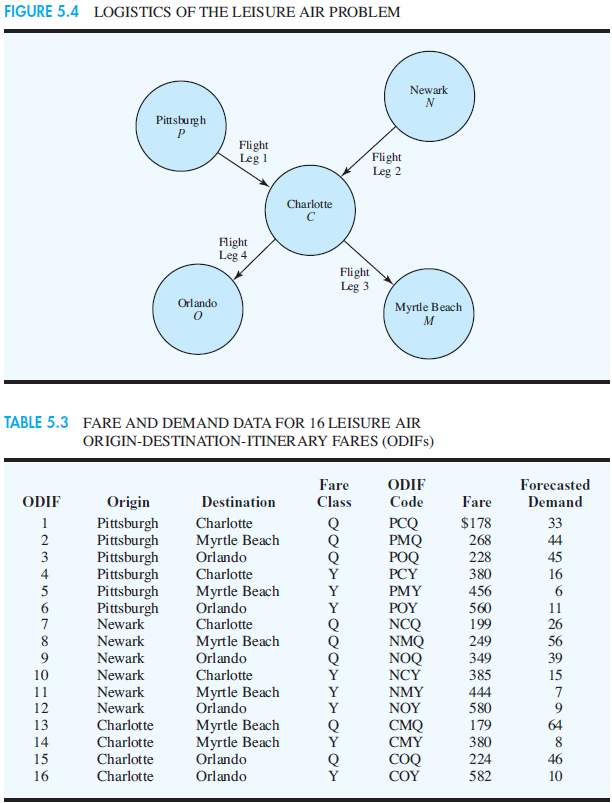Reference: <An Introduction to Management Science Quantitative Approaches to Decision Making, Revised 13th Edition>
Leisure Air has two Boeing 737-400 airplanes, one based in Pittsburgh and the other in Newark. Both airplanes have a coach section with a 132-seat capacity. Each morning the Pittsburgh-based plane flies to Orlando with a stopover in Charlotte, and the Newark-based plane flies to Myrtle Beach, also with a stopover in Charlotte. At the end of the day, both planes return to their home bases. To keep the size of the problem reasonable, we restrict our attention to the Pittsburgh–Charlotte, Charlotte–Orlando, Newark–Charlotte, and Charlotte–Myrtle Beach flight legs for the morning flights. Figure 5.4 illustrates the logistics of the Leisure Air problem situation.For May 5, Leisure Air established fares and developed forecasts of customer demand for each of 16 ODIFs. These data are shown in Table 5.3. determining how many Q and Y class seats to make available are important decisions that Leisure Air must make in order to operate its reservation system.

Using P for Pittsburgh, N for Newark, C for Charlotte, M for Myrtle Beach, and O for Orlando, the decision variables take the following form:
PCQ = number of seats allocated to Pittsburgh–Charlotte Q class
PMQ = number of seats allocated to Pittsburgh–Myrtle Beach Q class
POQ = number of seats allocated to Pittsburgh–Orlando Q class
PCY = number of seats allocated to Pittsburgh–Charlotte Y class
...
NCQ = number of seats allocated to Newark–Charlotte Q class
...
COY = number of seats allocated to Charlotte–Orlando Y class

